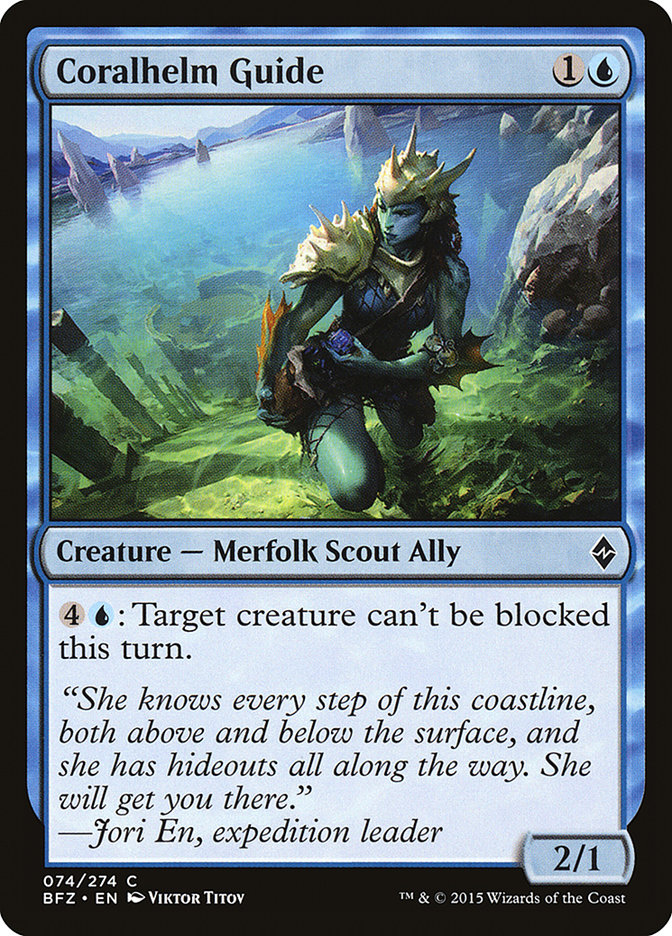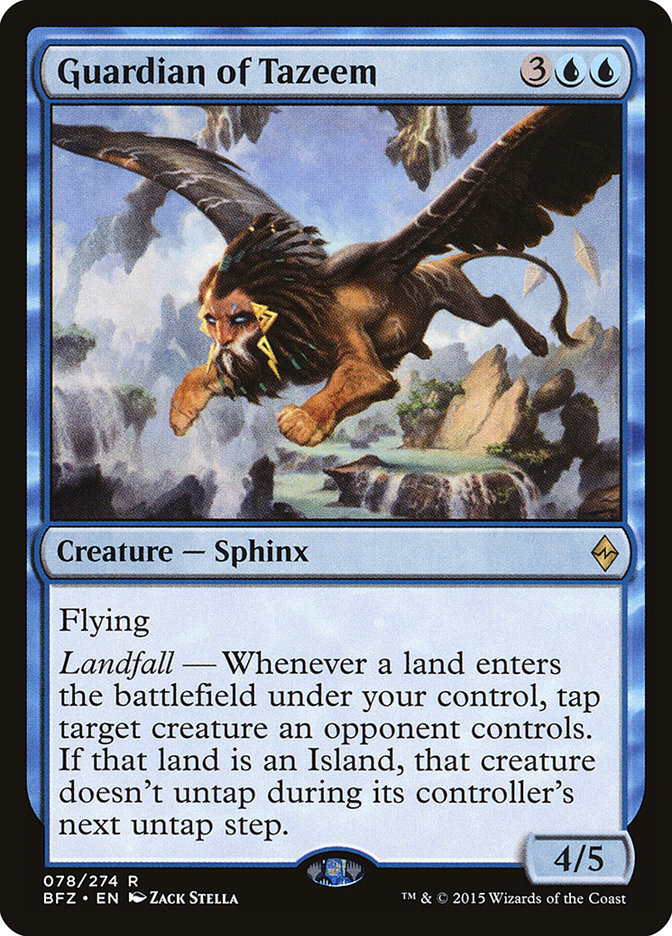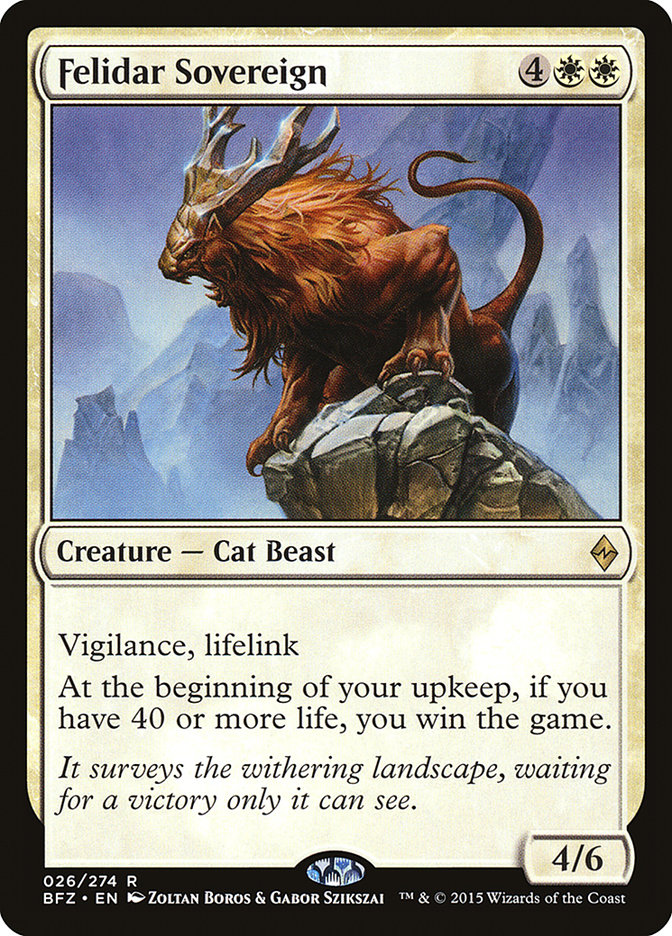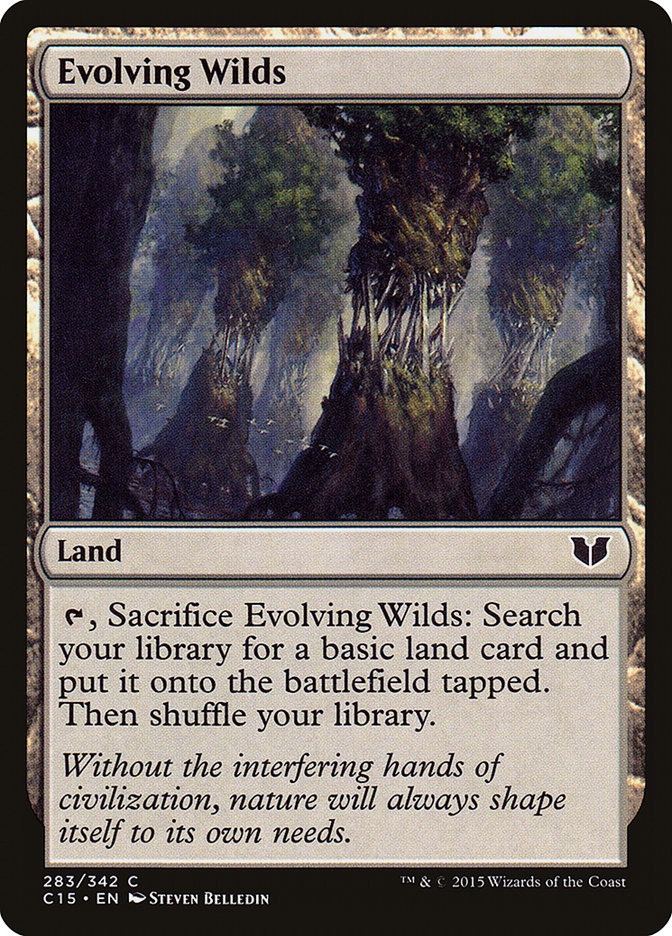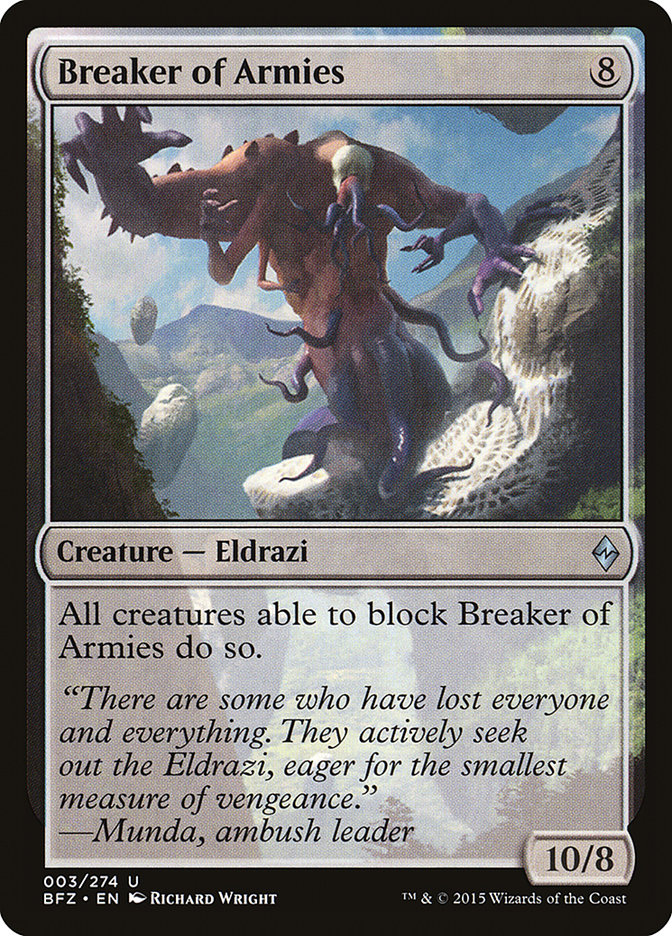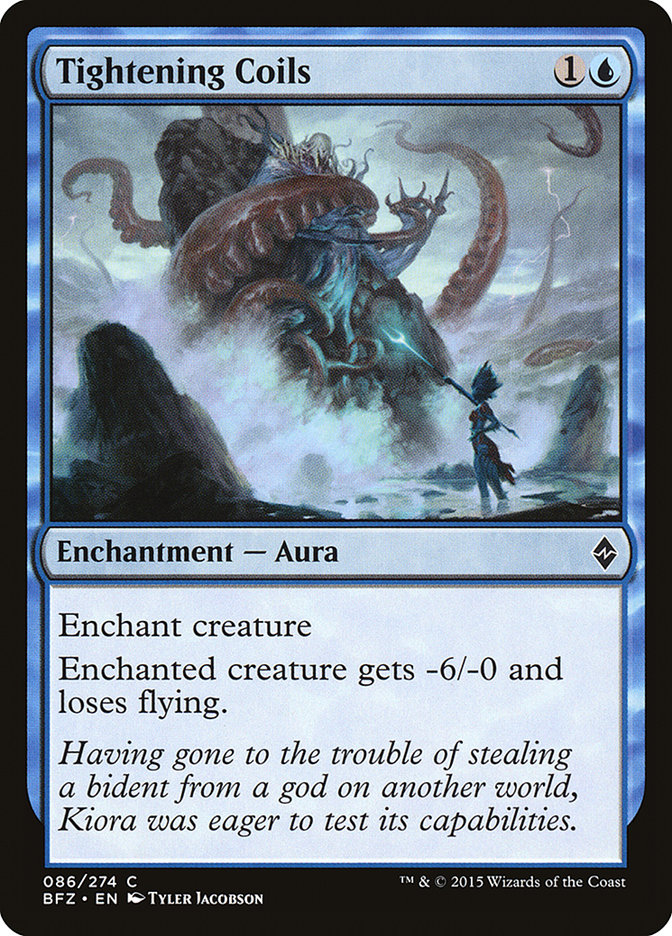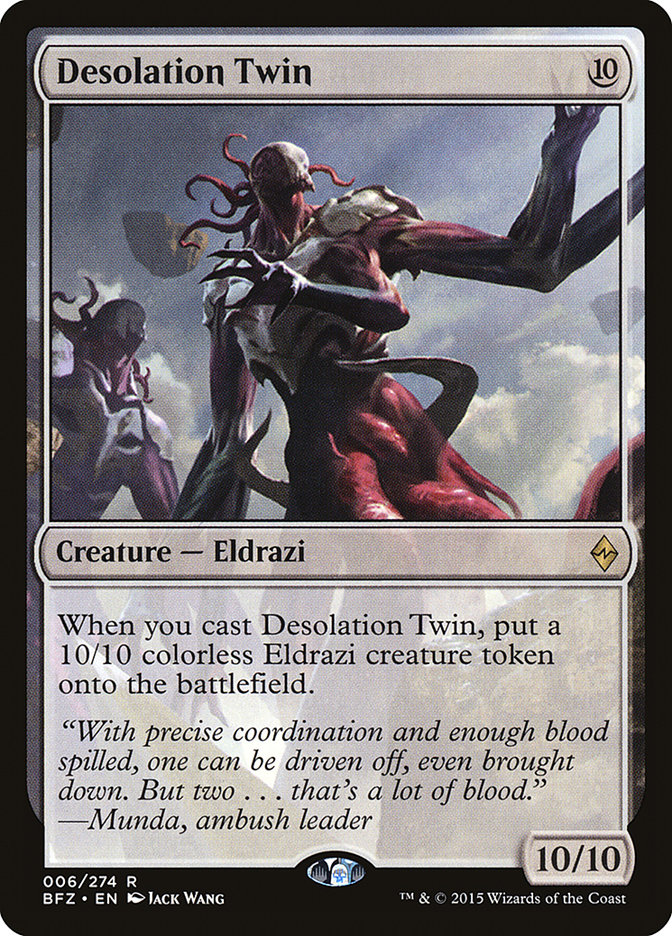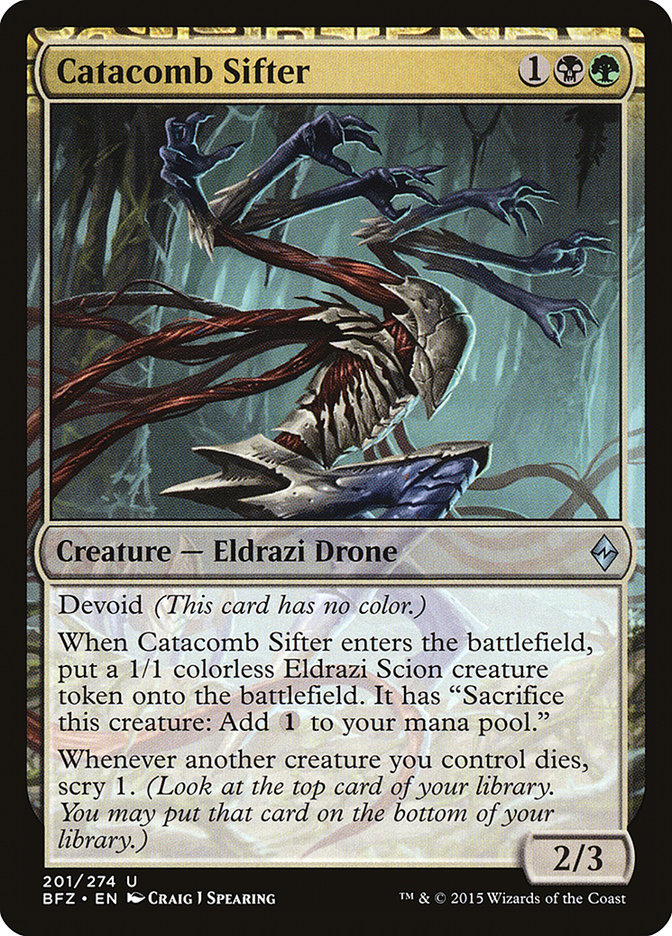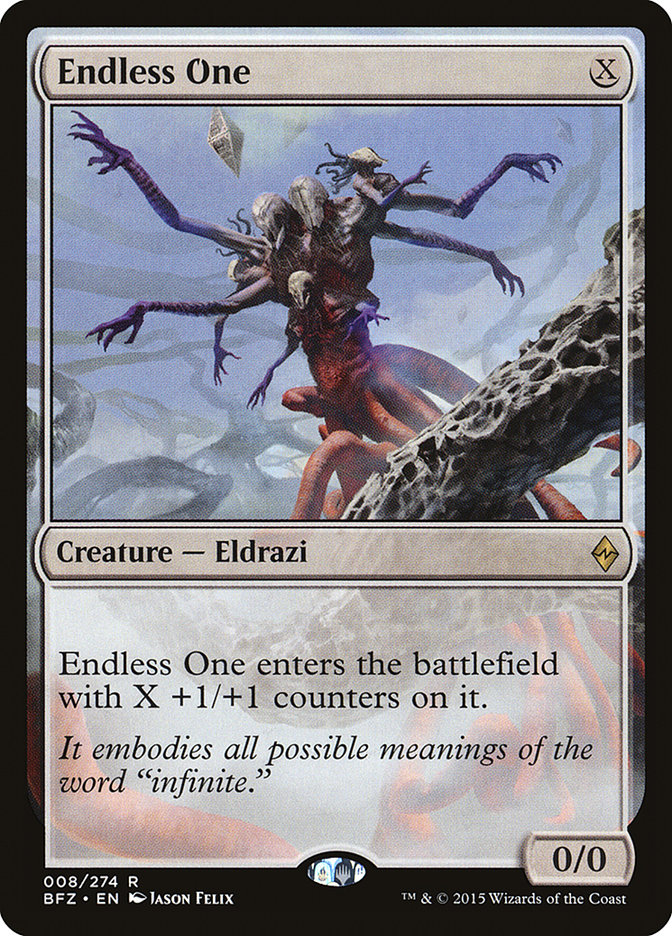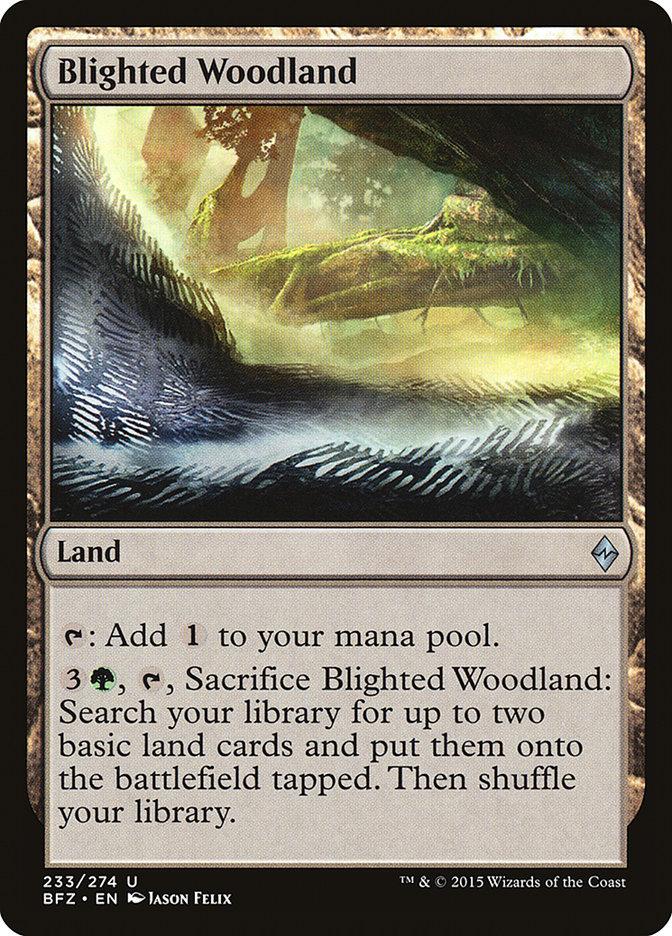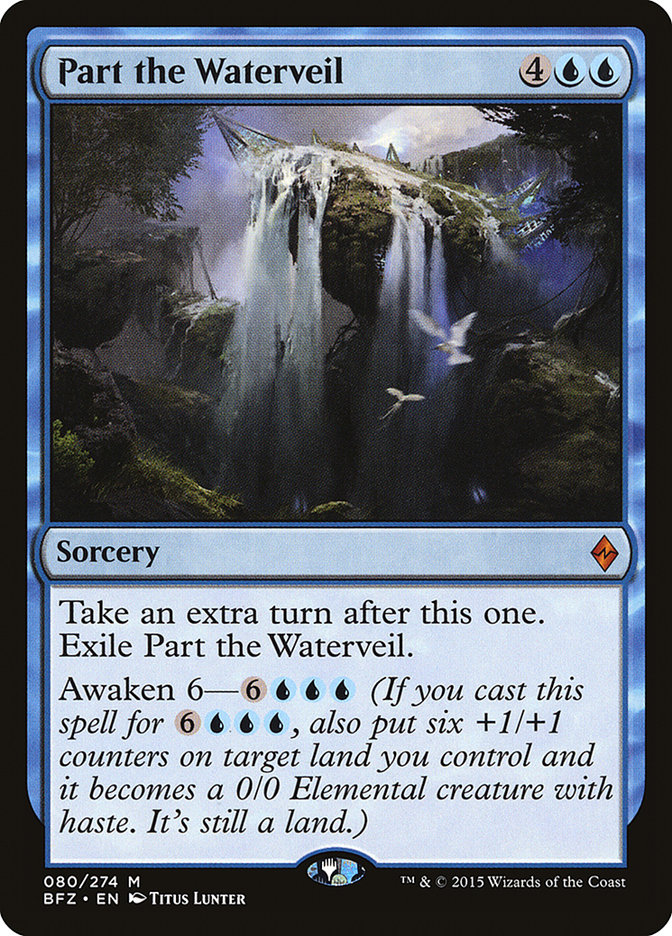After a string of early GP exits that included taking three losses before I took my second win at #GPMadison (also BFZ Limited), I wasn’t optimistic about
#GPAtlanta. I didn’t feel like I had anything special figured out in the Sealed format, and I hadn’t drafted much since the Pro Tour, and, while my team
felt confident, we didn’t do particularly well in the Limited portion, so I didn’t really know how good our positions were.
When I got to Atlanta and opened my Sealed pool, I didn’t have any of the cards I really wanted to see, like good rares or Hedron Archive. I had a pretty
straight forward build. I had a few options, but my most cohesive deck was U/W Control. It had a reasonable curve and all the cards were on plan, but the
only rare in my deck was Scatter to the Winds, and success in Sealed can often track to number of strong rares, so I felt like I was at a pretty big
disadvantage.
I managed to win my first round, and my deck felt pretty strong, but then I lost two games in a row to turn 4 Gideon, Ally of Zendikar and another round to
a string of great draws from a very synergistic U/B Devoid deck, and suddenly I was faced with needing to win three matches in a row with a deck that I
thought was probably in around the 40th percentile (worse than over half the decks in the room), and I was thinking about whether I’d spend Sunday hanging
out at the site playing Codenames, or stay in my room and test Modern on Magic Online to prepare for #GPPitt. To my complete surprise, I managed to make it
through the day.
Starting Sunday at 7-2, I wasn’t really thinking about winning the tournament. The point of GPs for me is always to collect Pro Points, and since I didn’t
have any points from GPs this year, I was just looking to get one of my six finishes toward the cap taken care of. The way I saw it, I was trying to win
two matches as soon as possible so that I could get to the point where each match win was worth one Pro Point, like at Worlds. I was basically hoping to
come away with two or three points.
The first draft was very simple. I opened Wasteland Strangler, a very powerful card that really wants to be in U/B, and got passed Ruination Guide, one of
the best uncommons for the archetype. From there, the color combination was open and all of my picks were on plan, and I ended up with a very good U/B
Devoid deck. Exactly one card in my deck had color, a single Coralhelm Guide that I’d taken as my first pick in pack two out of a pack that had no other
cards I could possibly play. The Coralhelm Guide ended up being fantastic for me, winning at least one game that I couldn’t have won otherwise by itself,
and playing well in several others, which is noteworthy to me because it’s not generally a card I like very much. The reason it was good in my deck is that
I had a lot of 3/2 creatures and not very much evasion or removal, so I could generally come out fast and get my opponent low, but the battlefield could
stall after that, and Coralhelm Guide was perfect for ending the game in those spots.
My second draft was equally straightforward. I opened Guardian of Tazeem and got passed Felidar Sovereign, and drafted U/W Control from then on, and it
felt very open–my deck was even better than the previous one.
I mulliganed to five twice in my first match against Aaron Lewis, but I’d won the first game, and the matchup was very good for me–he was W/B Control–and
after playing a long set of games, our third game went into extra turns, and, while I was winning, I couldn’t kill him in time, and on his last turn, he
was able to get back to a point where I’d need to draw something else to actually win in the short term, but I was clearly still ahead. Because a draw
would knock both of us out of contention for top 8 and minimize the number of Pro Points the two of us got, he decided to concede.
After the match, my new TeamUltraPRO teammate Corey Burkhart, who was also in my pod, told me about the deck he lost to–G/B Tokens with Tajuru Beastcaller
splashing several Outnumbers. That sounded like the worst matchup for my deck full of walls, removal, and expensive finishers, so I hoped I wouldn’t have
to play against that.
I got my wish and was paired against Gerry Thompson instead in the next round. He was playing R/B Devoid, which is an archetype I think my deck is
generally very good against, but he had three Molten Nurseries (on the battlefield in game 2, I’m not sure how many were in his deck) and a Nettle Drone,
and I didn’t have any answers to those, so it ended up being very close. In the second game, I was dead if Gerry drew any colored spell on the last turn,
but he drew a land, and I managed to sneak out of it at one life.
That match ended quickly, so I had time to watch the end of the match that would determine my next opponent. Corey’s first opponent, Zan Syed, was playing
against a R/B Devoid deck I would love to play against. At some point, Zan’s opponent sloppily tapped two mana to regenerate a Skitterskin, and then, after
that resolved, quickly tried to change which lands he tapped without saying anything, and a judge noticed it. After an investigation, he was disqualified,
and I found out I’d have to play against Zan.
Luckily, he didn’t get any busted Tajuru Warcaller draws, and my draws in the first and third games were great. After the first game, I sideboarded out all
my Walls and big Eldrazi for 2/2s and tricks and anything that would let me be more aggressive. Despite changing nine cards, it didn’t seem to matter at
all–I lost a game where I couldn’t really cast spells, and won a game where I drew all my rares and good uncommons.
So I finished in seventh place, and it was onto the draft. Luckily, my draft was covered on Twitch, which is great, because, unlike my previous two drafts,
I thought this one was really interesting and very much worth going over pick by pick.
The draft starts with a pack where I thought my best options were Herald of Kozilek, Pilgrim’s Eye, or Painful Truths, after dismissing Bone Splinters and
Kozilek’s Sentinels. As Patrick evaluates, I felt like Painful Truths was a good medium between the uncommons, leaving me fairly open while offering a lot
of power. I actually have very little experience drafting Painful Truths, but I’d heard good reviews from others, and I felt like I could likely draft a
good deck around it, either any sort of control deck with a small splash or a green converge deck, which I’m more open to than many. I’m not very confident
in this pick, and I think Herald of Kozilek or Pilgrim’s Eye would both have been reasonable here.
From there, I got passed Beastcaller Savant, Forerunner of Slaughter, Carrier Thrull, and Evolving Wilds. Carrier Thrull isn’t powerful enough, and
Forerunner of Slaughter is a big commitment that doesn’t play that well with my first pick. Beastcaller Savant and Evolving Wilds are pretty close for
me–Beastcaller Savant is great in a green converge deck, but Evolving Wilds will help play Painful Truths in anything, and I certainly didn’t want to
commit to green this early. If I’m drafting green, I want it to be because the cards I want are there late, not because I move in second pick. Also, even
if I do end up green converge, I’m likely to have plenty of spells given how unpopular green is, and Evolving Wilds will still be one of the most important
cards in my deck. So at Beastcaller’s ceiling, they’re close, and if I go in any other direction, I’ll be able to make use of Evolving Wilds, and in many
cases, it’ll end up being the best card I could get from this pack. I’m pretty confident in this pick.
For my third pick, I had a choice between Akoum Hellkite, Breaker of Armies, Fertile Thicket, Kozilek’s Sentinel, Spell Shrivel, and some other even less
likely options. Patrick is right that I wanted to stay very open, and he’s right that I saw Akoum Hellkite as too much of a commitment. Despite that, he
was surprised that I took Breaker of Armies, so I’m not really sure what he expected. He said he’s seen Breaker of Armies go later than this, but it’s an
uncommon that I’m not going to table, and it’s one of the best cards at doing what it does, and I want finishers in the control deck I’m looking to put
Painful Truths in. I think this pick was pretty clear unless I wanted to commit to a particular archetype, but I didn’t feel like I was getting paid to
make that choice; I could just move into something if I had a particular preference. I don’t, so I want to get paid off with a better card if I’m going to
commit in this spot.
The next pick was a clear Kozilek’s Channeler, which would work perfectly with the Breaker of Armies I just took and let me build a bigger ramp strategy.
In my fifth pick, I had a choice between Blighted Cataract, Tightening Coils, Demon’s Grasp, Culling Drone, and Natural Connection. Blighted Cataract is a
good control card that plays well with Kozilek’s Channeler, but it doesn’t play well with Painful Truths, as I’m less likely to want colorless lands if I’m
playing more than two colors. Culling Drone is a “high pick black card” some portion of the time because it’s important to some archetypes, but it would
most likely be horrible in my ramp/control deck. I’m generally not a fan of Demon’s Grasp, and when I have card draw, I really just want cheap removal, and
if I’m only really looking to attack with giant Eldrazi, I love Tightening Coils. I felt like Cedric and Patrick were much less impressed with Tightening
Coils than I was while I was drafting, as I expected basically any number to be excellent in my deck and didn’t really consider the choice between a five
mana removal spell and a two mana removal spell close. The last option is Natural Connection, but again, while it’s likely that I’ll be green, I’m not
willing to pay anything to move into it at this point, and that means I’m not going to give up premium removal for fixers.
The next pack was one of the harder picks–I had a choice between Desolation Twin, Adverse Conditions, Incubator Drone, and Tajuru Stalwart. I’ve been
really impressed by Adverse Conditions, but haven’t had enough experience to figure out if you can really play it in decks that don’t care at all about
tempo, and I was thinking it would likely be at the bottom of its range in my deck. Incubator Drone felt like a completely replacement level card, and
Tajuru Stalwart was again, paying a price to move into green. I know people don’t love Desolation Twin, but I think it gives me a lot of options in the
draft to know that I’ll have a card that can go over the top of almost anything, which will allow me to keep prioritizing things like Tightening Coils and
Kozilek’s Channeler and to make sure those cards that I already have perform at the top of their range. If I end up with a lot of fixers like Natural
Connection, it will give me something to do with the mana; and if end up with a lot of Scions, it will give me something to do with those too. I certainly
might end up cutting it if I transition into a slightly faster deck, but I felt like the ceiling on the card was pretty high, and the value over
replacement of the cards I’d be taking over it weren’t great, so this felt like a good spot to gamble. Overall, this pick might have been wrong, but if it
was, it was a cheap place to be wrong (though one that gets expensive if I put it into my deck when I shouldn’t, which may have happened).
The next pack was an easy Tightening Coils for the same reasons as before. At this point, I’m solidifying as a traditional control deck–card advantage,
removal, and finishers, exactly as Patrick mentions here. After this pick, Cedric mentions that we might see G/U, because you know green’s open–this is
exactly how I was thinking–through all of my picks, I was pulling green into consideration. At all points, I was thinking that I was most likely drafting
green even though I technically didn’t have any green cards. It was nice that I could shift “out” of it at any point, but I just expected that later on I’d
see green cards that fit my plan.
The eighth pick offered Grave Birthing and Scour from Existence. I already had removal and expensive stuff, and I didn’t think I’d have to prioritize
Scour, and Grave Birthing would help me hit land drops and cast my big spells. If nothing else, I could use it to play Kozilek’s Channeler on turn 4, and
it would also give me a Scion for the Bone Splinters I was hoping to table in the next pack. This was another clear pick for me.
From the pack that I opened, Bone Splinters came back, and again, I didn’t want to prioritize Scour, and I was interested in prioritizing Eldrazi Scions,
so this was an easy pick.
My first actual green card came in the form of a Rot Shambler that I tabled in the next pack that would work well with both of my previous picks and had a
high ceiling in the right deck (a point I prioritize very highly). There were no other cards I wanted to maindeck in that pack, so it was very clear.
The next pack contained both Fertile Thicket and Blisterpod, which made it clear that the kinds of cards I wanted would be tabling, and Fertile Thicket was
clearly more important.
With three cards in the pack, I still had a difficult choice, which is a sign that I was in the right place. Call the Scions would be good if I ended up
straight ramp, but Vampiric Rites is one of the most important cards in most G/B Scion decks, which I was still very much ready to transition into. I
wasn’t necessarily where I’d want to be at this stage to optimize Vampiric Rites, but it wouldn’t take very many picks to get there, so again, I went with
the card that has the higher ceiling.
At the end of the pack, I got a free Seek the Wilds which would help make sure my mana could work, and I was well on the path to having great mana in my
three-color deck, to the point where I could easily splash another color.
Patrick mentions at this point that I’m not locked into playing blue for the two Tightening Coils I’ve drafted at this point, but given that I already have
Evolving Wilds, Fertile Thicket, and Seek the Wilds after only one pack, I didn’t think there was any chance I would omit playing them in my final deck. He
also says, “there’s other opportunities to get nine and ten mana plays, but you just can’t risk it” while they’re joking about taking the Desolation
Twin–this is only somewhat true–there aren’t any outside of rare. If you want to go that big, you really have to prioritize those cards. You can
get Ruin Processor and Eldrazi Devastator later in the draft most of the time, but if you want good top end, you can’t just expect that there will always
be more.
My second pack offered one of the hardest picks of the draft: Catacomb Sifter versus Endless One. The ceiling on Catacomb Sifter only debatably passes the
floor on Endless One, and there’s an outside chance I can table the Catacomb Sifter, but if I try to pass it, there’s also some chance that it pushes
someone to move into taking the kinds of cards I want. Ultimately, I decided that Endless One just wasn’t what my deck needed–the vanilla creature is a
fine blocker and or attacker, but I wouldn’t need it to end the game, and it wouldn’t be the best at prolonging the game. It’s a good rate and a flexible
card, but it’s really not in line with my plan at all, while Catacomb Sifter is perfect in every way. I feel good about this pick, but it wasn’t easy.
You’ll note that while I’m debating the pick there, I flip back to the Giant Mantis for a moment–I know that that will be important to what I’m doing, and
I’m looking to pick it up ninth. This is another argument against trying to wheel the Catacomb Sifter, as I’m getting a good card for my deck either way.
Giant Mantis may not seem like card to get excited about wheeling, such that it shouldn’t enter the equation, but G/B has a tendency to be soft to fliers
in any Limited format if you don’t prioritize reach, and this card actually matches up very well against the fliers in this format. All of my biggest
mistakes this draft end up being the several times when I pass Giant Mantis when I didn’t need to, because it always felt like there’d be more of them, and
I got distracted by hoping to find Eyeless Watchers as my four-drops, but I really needed Giant Mantises, and I ended up losing to Cloud Mantas as a
result.
My next pack offers a Fathom Feeder, which is a clear pick over Benthic Infiltrator, Giant Mantis, and other less important cards. This will play perfectly
with my “generic control deck” plan.
The next pick was another extremely close pick. Eyeless Watcher could easily end up being the most important common for my deck, playing extremely well
with the small sacrifice theme I have access to and the ramp plan I’m working on, but Lumbering Falls is a great card that will really help with the
difficult mana requirements I’m asking of a deck that looks to be “splashing” blue for two-mana plays. I ultimately go with Lumbering Falls, and later said
that I thought it was wrong, but that’s mostly because, as it happened, I didn’t get a better shot at Eyeless Watcher, and I did get a shot at other
fixers. In reality, I think I’m a lot more likely to see another Eyeless Watcher than another Evolving Wilds, and if I’d been properly prioritizing Giant
Mantis, then I wouldn’t have been so desperate to find Eyeless Watchers anyway, so I think this pick was actually right. It’s worth noting that there’s
also a Plated Crusher, which is great in my deck, but the fact that I’ve already prioritized the eight and ten mana Eldrazi means that I can focus on
filling these other holes.
The next pack offered a pretty easy Lifespring Druid.
Fifth pick Smothering Abomination was just an outstanding gift–one of the best cards, but getting this here let me get really tunnel vision’ed on making
Scions, which may have ultimately been detrimental. Not that the pick hurt me, but just that it let me frame future picks the wrong way.
I made the sixth pick Blighted Woodland look very clear, but I definitely noticed the Titan’s Presence that would also be great in my deck. I wanted to be
completely sure my mana would work, I wanted to stay open to splashing another color still, and I wanted to make sure that I could ramp to my end game.
Also, despite the fact that I had two ten-power Eldrazi and two four-power Eldrazi, I didn’t really know how much more I’d be prioritizing large colorless
creatures, and I could easily end up short of a comfortable number if I went with the Titan’s Presence.
From the next pack, I thought Rising Miasma and Plummet were very close as sideboard cards. Rising Miasma can be great, but I thought I was a little too
likely to have small creatures on the battlefield at any given time, and Plummet would just simply do exactly what I needed to do. Dominator Drone, of
course, was completely off-plan.
The next pick was between Oran-Rief Invoker, a mediocre card that I’d like to play to fill out my curve, that would offer another big threat late; against
Coralhelm Guide, a card that would be worse at blocking early, which I felt made it a worse fit even though it had been good for me in my earlier draft;
and Dispel for my sideboard, which I might have taken, except I haven’t found that many spots where I really care about bringing it in in this format.
This next pick was bad. I took Natural Convergence over Giant Mantis, thinking I probably want one of these Natural Convergences, but my mana was going to
be good enough without it, and I really needed the good blocker. I could slightly forgive myself because I expected another in the next pack, but I’d need
to actually prioritize it for that to matter.
In the next pack I took Void Attendant, a card that offers a dream I always want to realize in a spot where I had Fathom Feeder and Grave Birthing; I
thought I might finally get to do it. I shouldn’t have been so drawn to an arbitrary chance to complete my mini-quest and should have accepted that the
card just doesn’t work. I should have recognized that I needed the Mantis, but my head was still on trying to find any way that I could to get more Eldrazi
Scions for my Vampiric Rites and Smothering Abomination after failing to see another Eyeless Watcher.
The next pack let me take Blisterpod over Eldrazi Devastator, again, because of the other large Eldrazi I’d taken earlier.
After a few relatively meaningless picks, I was gifted a last pick Fertile Thicket, further punishing me for taking the Natural Convergence over the Giant
Mantis.
At this point in the coverage, Cedric talks about my last article, about how G/B is hard to
draft, and all the different ways you can draft it, and as I’m fanning through, you can see clear evidence of that. This is not, for example, a spot where
I’d have any interest whatsoever in a Swarm Surge–I don’t need a finisher, and I have other things to do with my tokens. I don’t have enough of them or
that many other creatures. I’m very much in the typical G/B space in that I’m looking for cards that use the particular intersections between those colors
in this set, but I’m definitely in a very specific space within that constellation at this point.
It’s interesting to me that Patrick expresses concerns about my mana fixing at the end of pack two when I have Lumbering Falls, two Fertile Thickets,
Evolving Wilds, Blighted Woodland, Seek the Wilds, Natural Convergence, and Lifespring Druid. Looking over the cards I have, I could definitely use more
four-drops, (those Giant Mantises I should have taken), but, as mentioned, I was tunnel vision’ed on saving that space for Incubator Drone and Eyeless
Watcher.
My third pack offered Pilgrim’s Eye and Clutch of Currents (Grave Birthing was also present, but it’s not as good as Pilgrim’s Eye and fills a very similar
role). Clutch of Currents is great, but, as Patrick identifies, completely off-plan for me. At this point, I’m really starting to glut on three-drops, and
as I keep harping on, getting fully punished for the Natural Convergence pick, which will keep happening.
My first instinct in the next pack is to take Bone Splinters, but then I realize that I’m still short on Eldrazi Scions and have other things to use them
for, and that Tightening Coils is going to do the same thing for me most of the time.
In the next pack, I took Dampening Pulse over Lifespring Druid and Giant Mantis–I definitely didn’t need more three-mana fixing, so passing the Lifespring
Druid was easy, and I’d probably table the Giant Mantis, but again, holding every other pick constant, it’s possible that my first Giant Mantis would be
better than my first Dampening Pulse, which is to say that I had to make the same mistake many, many times to get punished the way that I did here.
The next pack offered Evolving Wilds, Giant Mantis, and Mire’s Malice. I think Evolving Wilds is right here, but again, it’s worth noting just how many
times I saw Giant Mantis.
Part the Waterveil, my fourth pick over Tajuru Stalwart, is a weird card to evaluate that most people probably haven’t had a lot of experience with. Cedric
mentioned that I probably wanted one more Eldrazi, and this is a reasonable approximation of one. Also, a lot of my friends have consistently told me that
they’ve had great experiences with the card, even though I hadn’t actually played it. After adding Pilgrim’s Eye and Evolving Wilds to the healthy amount
of fixing I had after the first two packs, I wasn’t worried about having UUU by the time I had 9-10 mana, and I did think I wanted another high quality top
end card. I get the feeling that Patrick and Cedric would have taken the Stalwart, but loved that I didn’t because it was entertaining. I don’t really
think the 3/4 is adding that much to my deck, as I can’t really expect to be able to attack with it usefully because of my Tightening Coils, and a 3/4 just
isn’t that good of a blocker in this format. Part the Waterveil, on the other hand, offers a very unique and powerful finisher with a reasonable buyout
that can offer solid value earlier on.
The next pack Mire’s Malice was a clear pick over nothing.
Cedric kind of laughs at the Shrine of the Forsaken Gods that I saw in the next pack before grabbing the Incubator Drone, but I certainly was sad that I
couldn’t have ended up with it for free, as I probably would have played it, but thought the Scion maker was too important.
The following pack was really bad for me. I took a Territorial Baloth because I had two Evolving Wilds, and if I needed a moderately large attacker for
some reason, it would do that, but I didn’t think I’d use it.
Grave Birthing, as they identified, was a card I was happy to pick up and the clear pick.
The draft rounded out with a Mortuary Mire, an Anticipate, a Wave-Wing Elemental (over a Scour from Existence, because at this point, I was actually
planning to play the Wave-Wing Elemental because I could use something at that point in the curve; having failed to table the Giant Mantises this time
around, unlike in the previous pack, I realized that I needed the flying blocker, a Boiling Earth, and whatever I got last pick).
Ultimately, I was really happy with my deck. I still think it was very good, but would have been much better with 1-2 Giant Mantises.
I find that when I lose, I tend to be most disappointed not because I hate losing or because I’m hurt by having missed the opportunity to win, but because
I know that it makes it look like I’d made a mistake. If I do badly at a Constructed event, I must have chosen the wrong deck, even if I think the deck was
great and if I do badly in a draft, the deck I drafted must not have been good. Here, I really wanted to show how to draft this kind of deck and that it
can be good, and I think I came close. At the same time, I really didn’t earn it, since I ended up losing, poetically, to exactly Cloud Manta, the card
Giant Mantis is best against, and so, in my efforts to show that I could draft green, I fell a little short. At this point, all I can do is echo Ari’s
sentiment:
11-4. Thought I was good enough to draft Green, wasn't. Losses were
mostly due to punts, misbuilds, and mispicks.
— Ari Lax (@armlx) November 15, 2015

